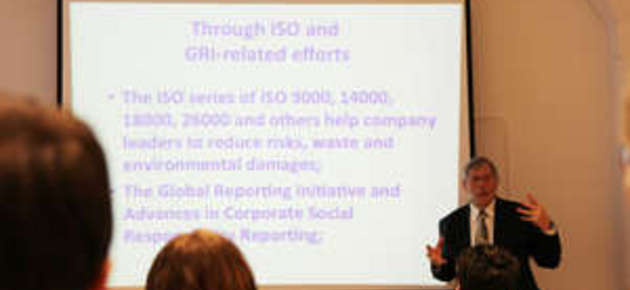Preventive actions for environment’s sake


– What can we learn from history? Can we even learn anything? And if we can, why is the situation of the Earth like this? Huisingh asks.
– Many crises are threatening the environment. People often react to crises by denying them.
People are always behind environmental crises
The amount of carbon dioxide and methane is continuously growing, which partly causes one of the biggest environmental crises – global warming. Rising temperature has been predicted to lead to a remarkable rise of sea levels.
– Many cities have been built by the sea. The rise of sea levels would be disastrous for them, Huisingh says.
Also many other factors have threatened the condition of the Earth in the past, e.g. halogenated substances, nuclear meltdowns, smogs and pollutions. It’s all people’s fault. What’s even worse, the amount of people is only rising: annually by 70 000 000.
More ecologic processes to economic practices
Our environment is changing. More and more arable soil is turning into deserts and the pH level of the seas is decreasing. The acidification of the seas threatens all the corals and other species living under water. Every year a huge area of forest is destroyed.
– Also the amount of forest fires has risen.
Have the crises then stimulated us to make essential changes in our ecological behavior? Have we learned anything from our mistakes?
– Thousands of people have been developing new economy models that would be better for the environment. By thinking about economy it’s important to take the impact production has on the environment into consideration, Huisingh underlines.
– At this point we need such operations models that could prevent environmental crises. Products and production of the products should be modified so that they’d be more ecologic. Also the reuse and recycling of products should be increased.